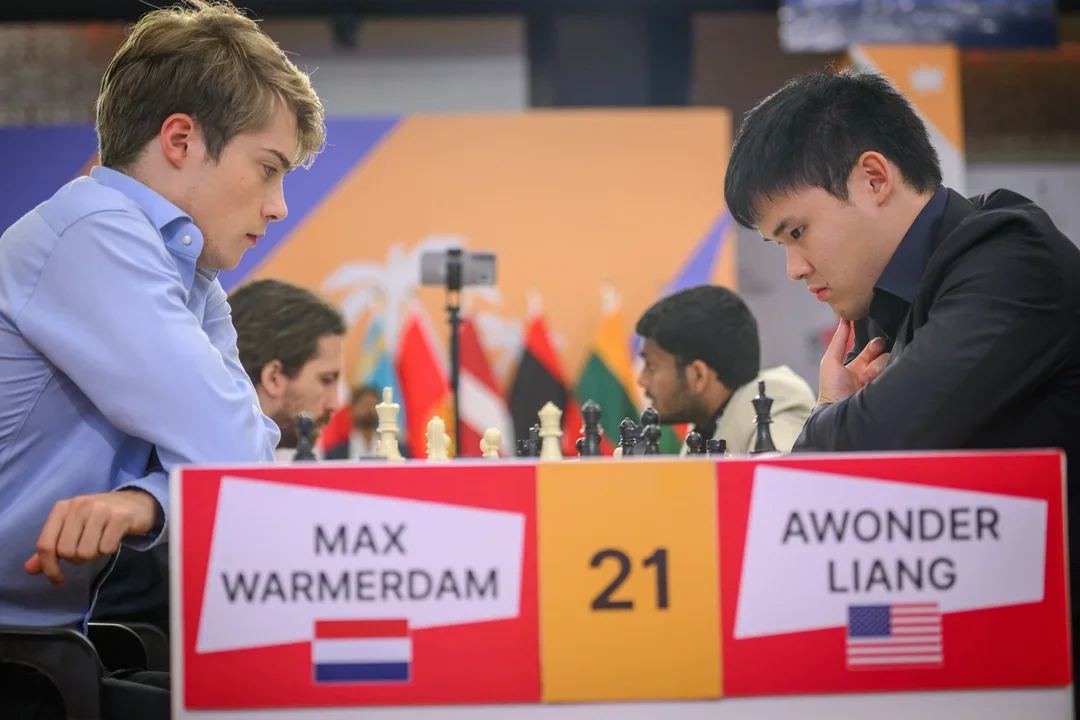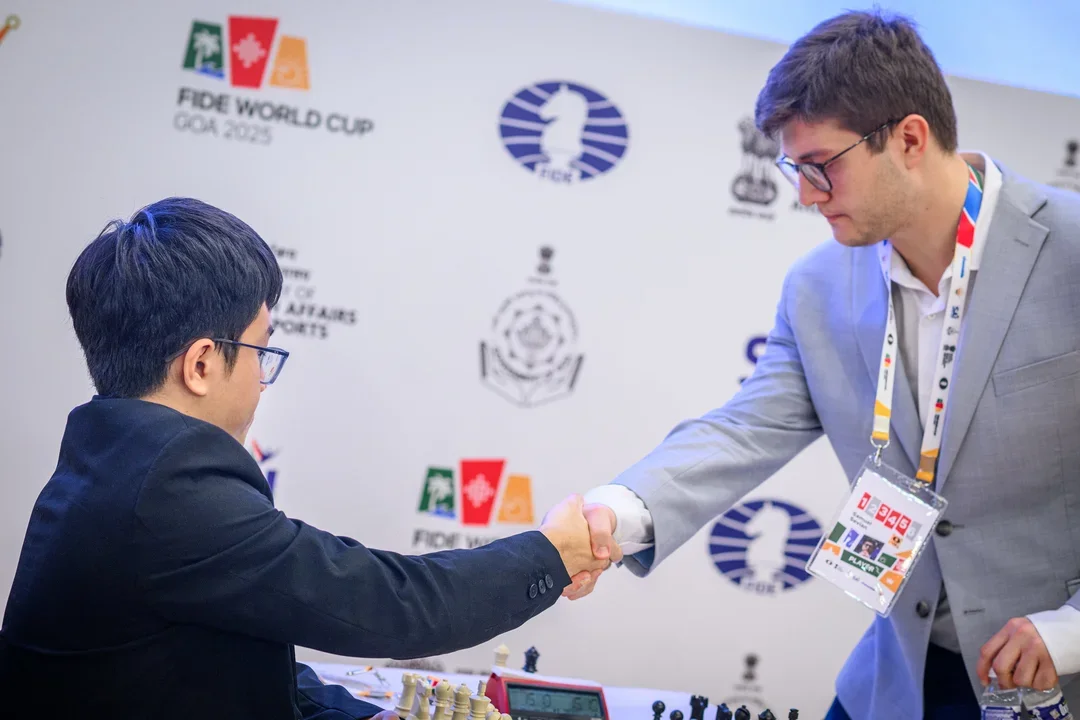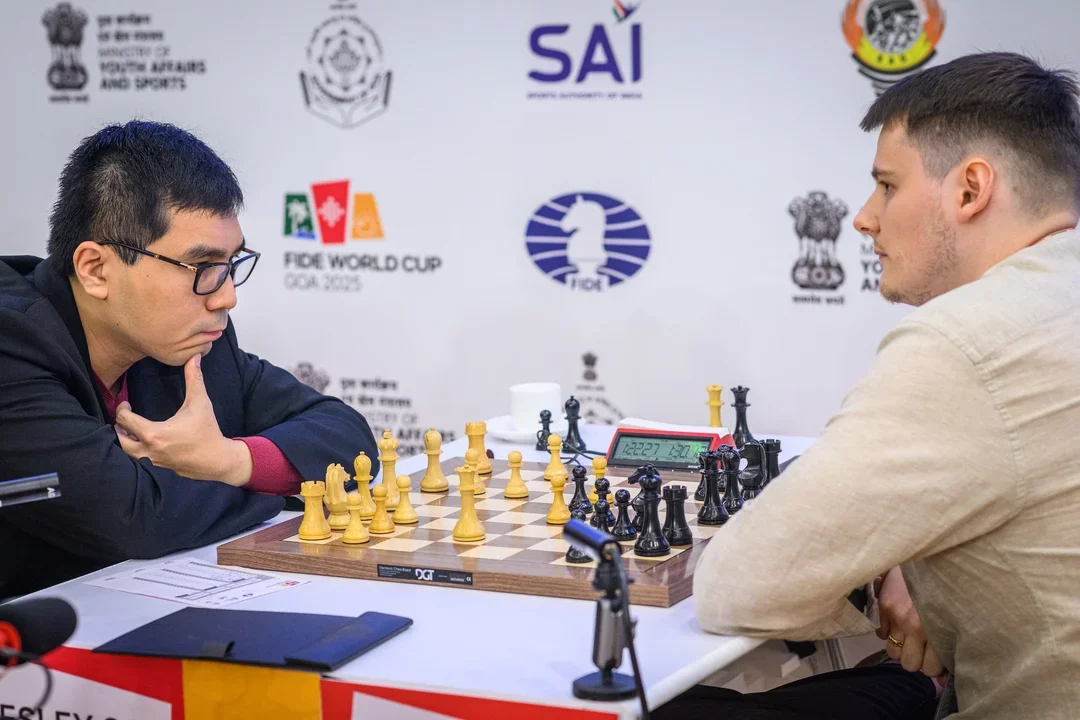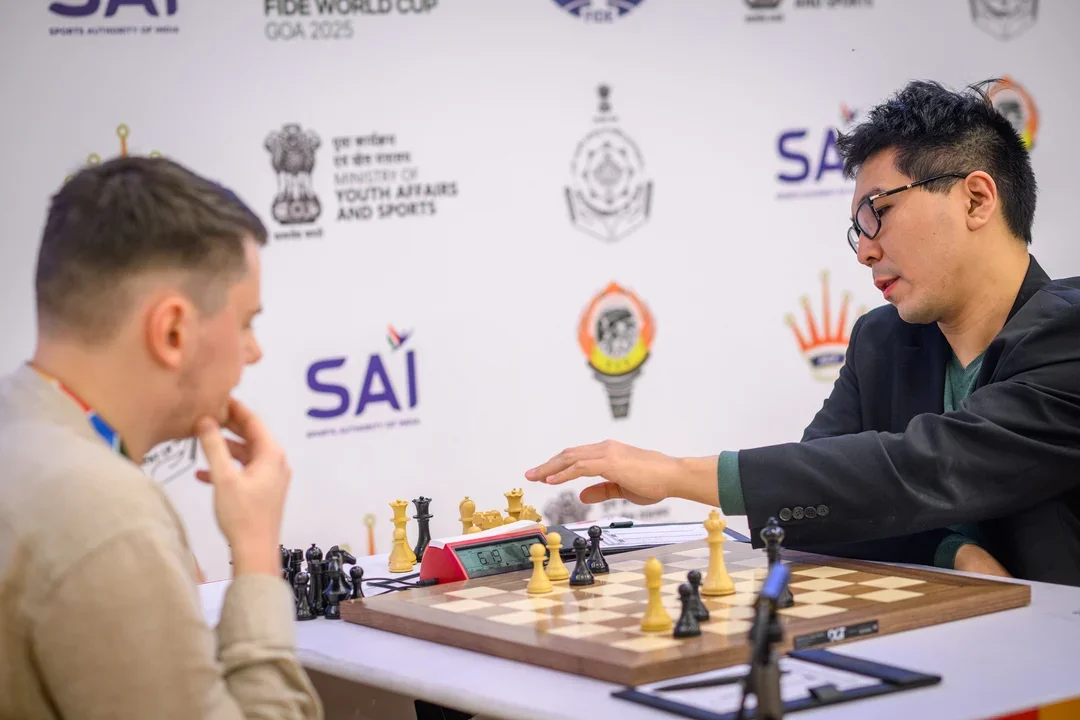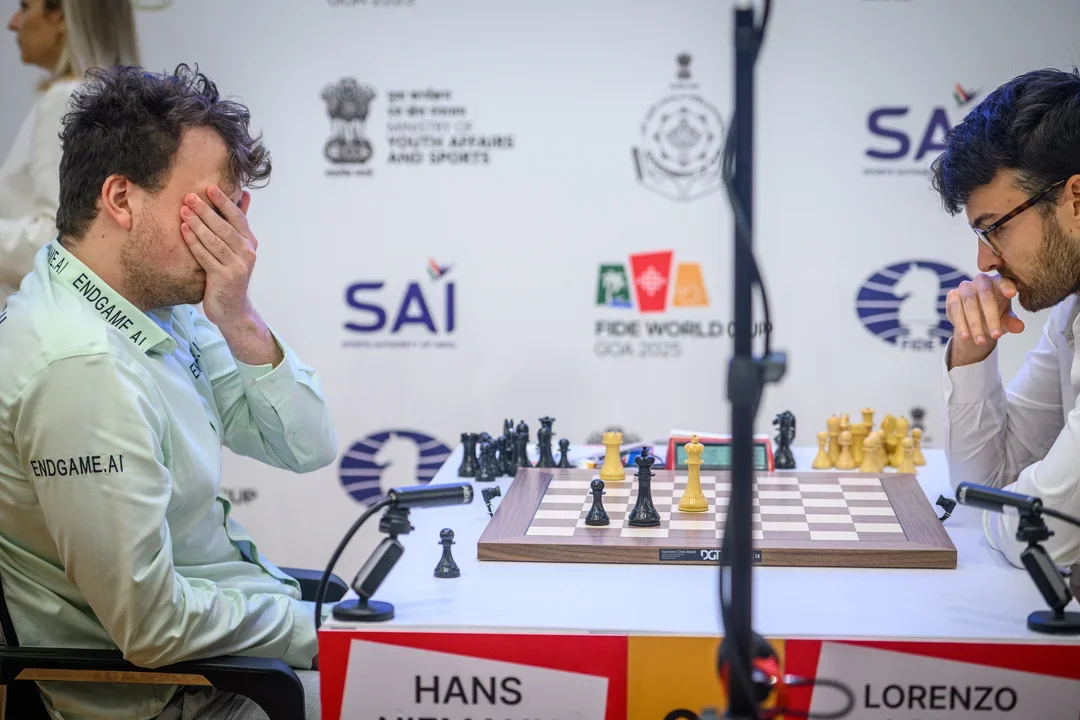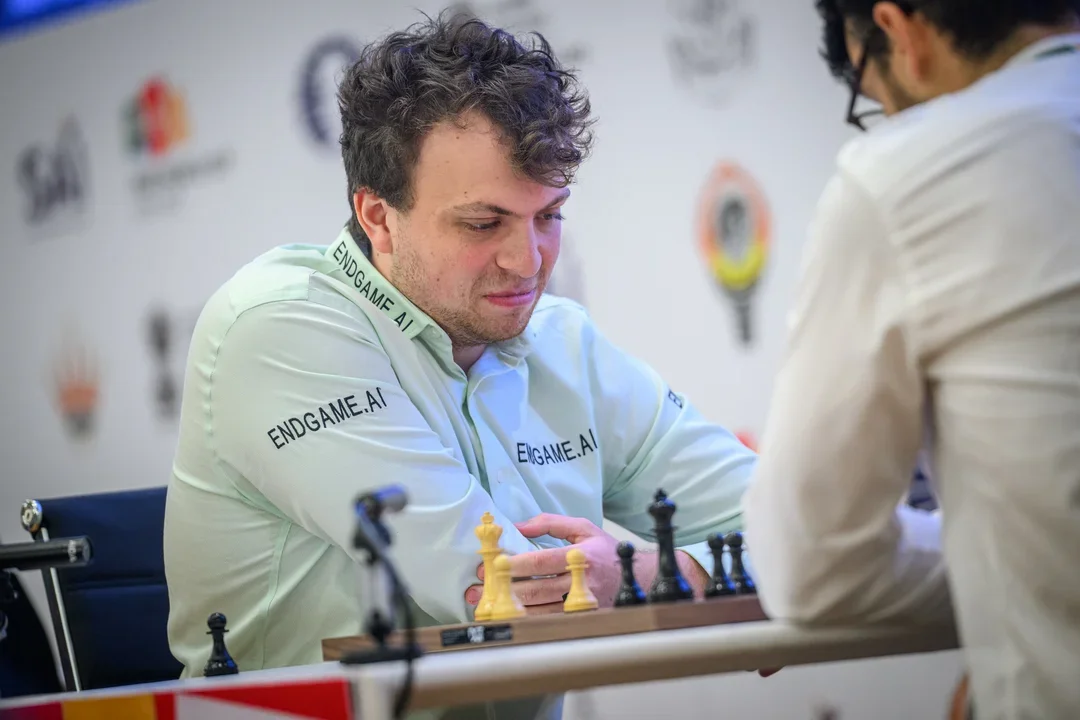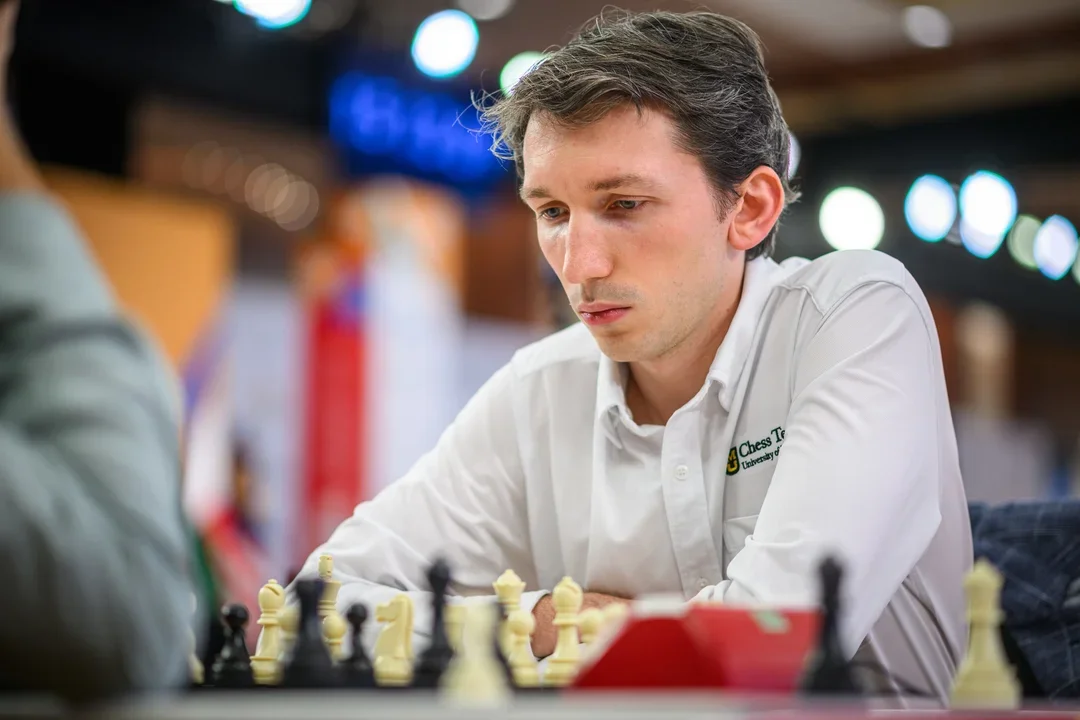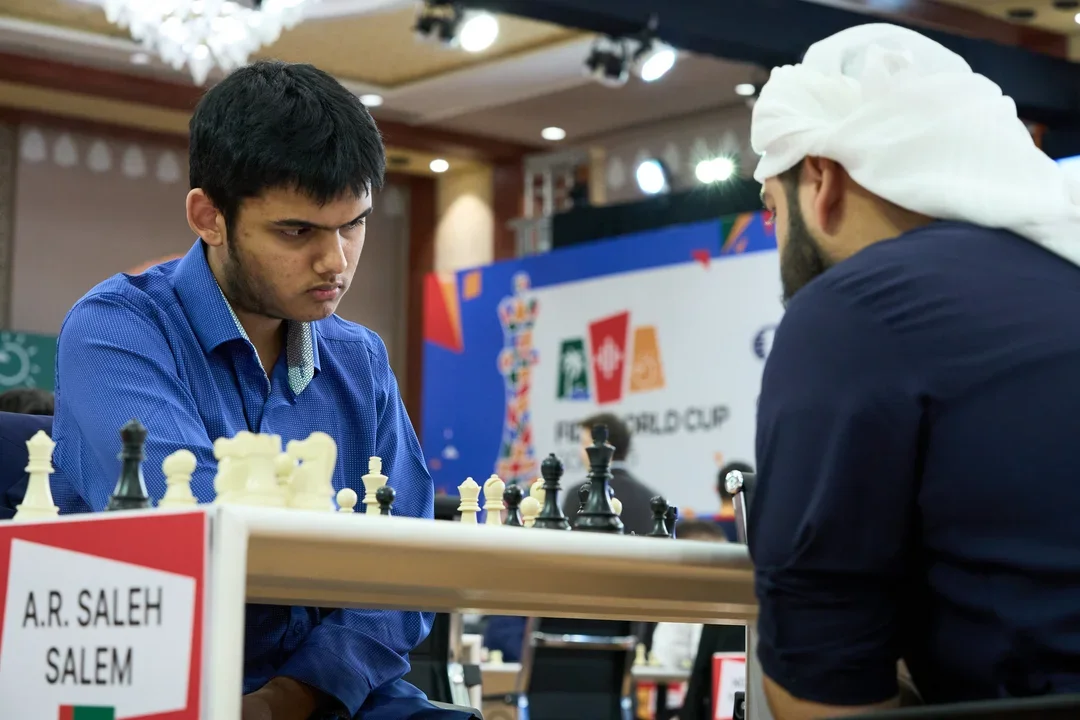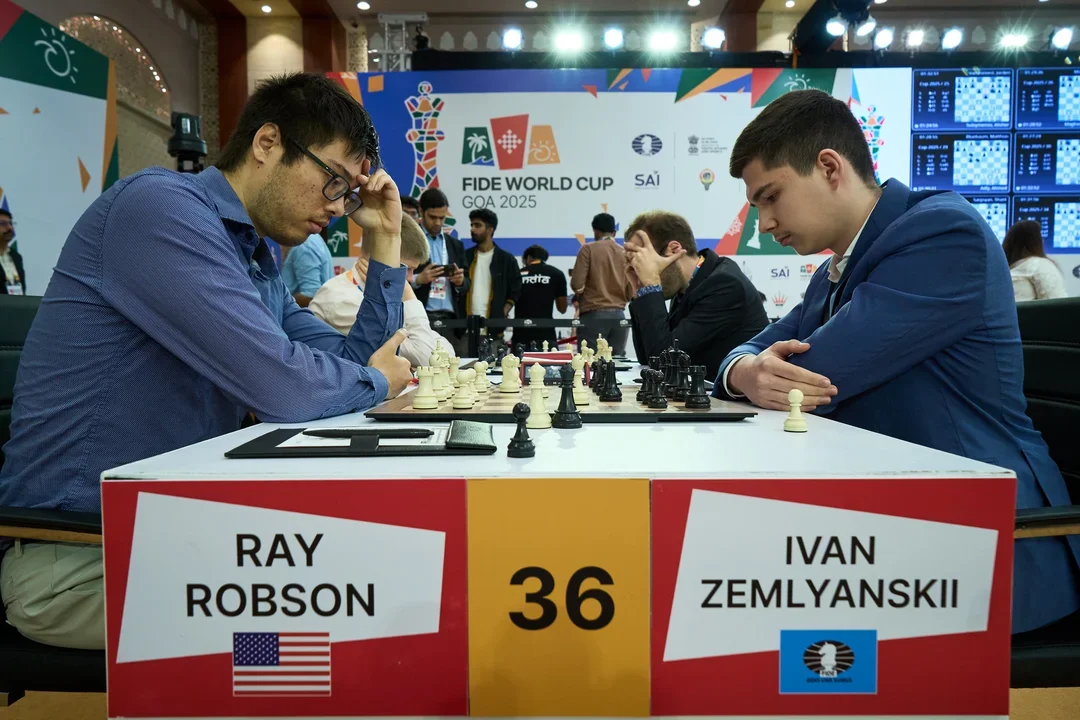After six days, two rounds, and countless upsets at the 2025 FIDE World Cup (read our preview, which describes the format, here), only five Americans (out of 12) have made it to the final 64 in Goa, India: GMs Levon Aronian (seeded 15th), Awonder Liang (21st), Samuel Sevian (23rd), Sam Shankland (46th), and Jeffery Xiong (52nd).
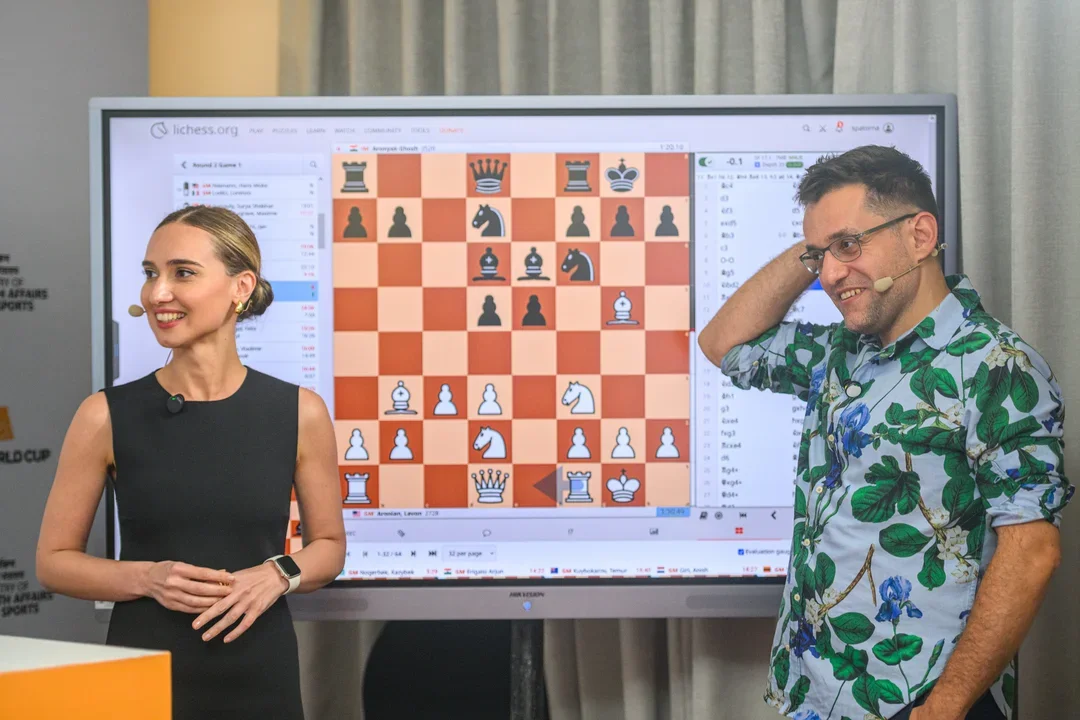
Aronian — who enters Round 3 as the top-rated American left standing — defeated Indian IM Aronyak Ghosh 1½–½ after some dazzling attacking chess in their first classical game.
Liang took down former Dutch champion GM Max Warmerdam 2–0 in a clash that demonstrated how Liang really took his game to the next level en route to joining the 2700 club. In their first game, included below, Liang uncorked a mating attack just when Warmerdam looked to have survived the worst of his Exchange-down position. But, in their return game, Liang won rather smoothly with the black pieces.
After a pair of classical draws against Singapore’s GM Tin Jingyao, Sevian won both rapid tiebreaks to claim the match 3–1. In the first rapid game, Sevian had to play the majority of his moves with under a minute on his clock, relying mostly on the ten-second increment:
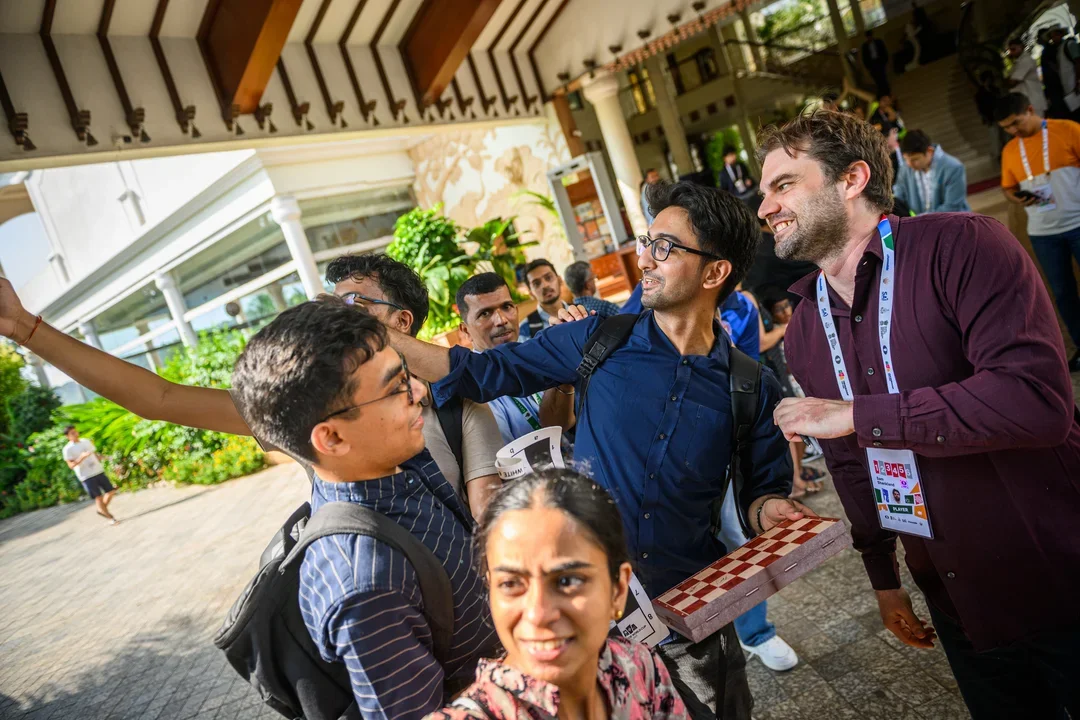
Despite entering as the rating favorite, Shankland’s 2–0 victory over legendary Ukrainian GM Vasyl Ivanchuk — who has been rated as high as second in the world — was one of the more impressive results of any player so far in the tournament. Shankland’s understanding of the position netted him the win in the first game, but his endgame technique in the return game was also a thing of beauty.
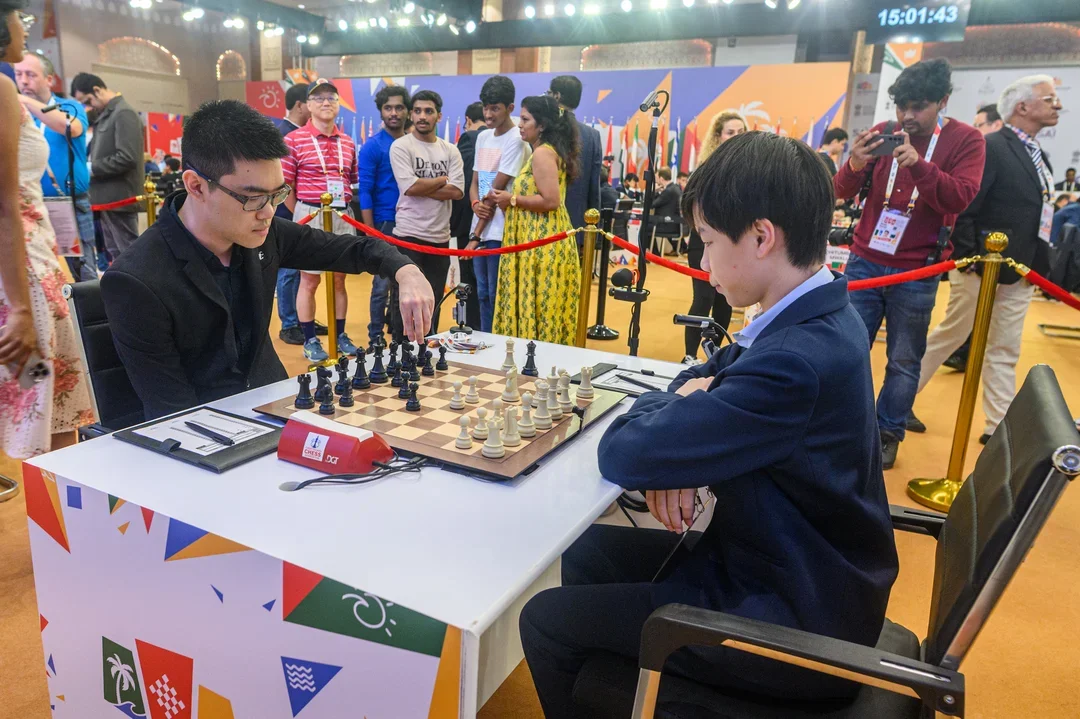
Xiong is the only American remaining who had to play in Round 1, as the top 50 seeds all had byes. There, he defeated 13-year-old Chinese CM Yiiheng Li 1½–½, but the win didn’t come easy:
In round 2, Xiong dispatched Spanish GM Daniil Yuffa 2–0, even managing to win with a rook against two minor pieces in the second game:
In our preview, I mentioned some “bracket math” to predict pairings based on seed numbers if there were no upsets. Well, entering Round 3, only 45 of the 64 top seeds have made it, accounting for an upset rate of almost 30%! This included three of the top 16 seeds, two of whom were Americans: GMs Wesley So (fifth), Hans Niemann (10th), and Ian Nepomniachtchi (12th).
So’s 1½–½ loss to former University of Texas at Dallas student and reigning Lithuanian Champion GM Titas Stremavicius couldn’t be more heartbreaking for fans of the highest-rated American in this year’s field. As White in the first game, So was pushing with an extra pawn in the longest game of the day, but was unable to come up with the winning plan:
The return game got off to a fantastic start for Stremavicius, who caught So making an uncharacteristic blunder early on, leading to a piece sacrifice. After a trade of queens, So had chances to draw before blundering into a losing position. But one practically imperceptible error of a pawn push from the Lithuanian shot the “eval bar” right back up to equality and, only a few moves later… So resigned in a drawn position:
The reason the position was drawn was far from obvious, and the consensus from top players was more shock that the position was drawn than it was shock that So resigned.
After two draws against Italian GM Lorenzo Lodici, Niemann was the heavy favorite in the faster time controls of the tiebreaks. Yet, in the first rapid game, it was Lodici who had Niemann on the ropes most of the game, and he managed to land the final blow after one final mistake from the American:
The remaining Americans who lost in Round 2 were GMs Ray Robson, Grigoriy Oparin, Abhimanyu Mishra, and Andy Woodward. Robson, Mishra, and Woodward each lost in the classical portion of their respective matches, while Oparin got into trouble in the tiebreaks.
Of this group, only Woodward had to play in Round 1. While his return game in the match against Indian IM Himal Gusain went smoothly, the first game featured an unusual piece sac for lasting activity and could have gone either way early on:
The final American slated to play in Round 1 was GM Kirk Ghazarian, but he did not arrive in time for either of his two classical games.
Round 3 begins Friday, Nov. 7 at 3:30 a.m. CST. Liang faces German GM Rasmus Svane, who upset Azeri GM Rauf Mamedov in the only match to go to Sudden Death on Thursday. Xiong will face Webster University’s Head Coach, GM Le Quang Liem. Shankland will have a tough pairing against Indian GM Vidit Gujrathi, who defeated 12-year-old Argentinian phenomenon IM Faustino Oro in a well-fought match. Sevian will face Russian GM Evgeniy Najer, and Aronian will face GM Salem Saleh (who just defeated Mishra).
After the tiebreaks conclude on Sunday, there will be a rest day on Monday, Nov. 10, with Round 4 resuming at the same time on Tuesday.
Categories
Archives
- December 2025 (20)
- November 2025 (29)
- October 2025 (39)
- September 2025 (27)
- August 2025 (29)
- July 2025 (43)
- June 2025 (25)
- May 2025 (24)
- April 2025 (29)
- March 2025 (29)
- February 2025 (20)
- January 2025 (24)
- December 2024 (34)
- November 2024 (18)
- October 2024 (35)
- September 2024 (23)
- August 2024 (27)
- July 2024 (44)
- June 2024 (27)
- May 2024 (31)
- April 2024 (51)
- March 2024 (34)
- February 2024 (25)
- January 2024 (26)
- December 2023 (29)
- November 2023 (26)
- October 2023 (37)
- September 2023 (27)
- August 2023 (37)
- July 2023 (47)
- June 2023 (33)
- May 2023 (37)
- April 2023 (45)
- March 2023 (37)
- February 2023 (28)
- January 2023 (31)
- December 2022 (23)
- November 2022 (32)
- October 2022 (31)
- September 2022 (19)
- August 2022 (39)
- July 2022 (32)
- June 2022 (35)
- May 2022 (21)
- April 2022 (31)
- March 2022 (33)
- February 2022 (21)
- January 2022 (27)
- December 2021 (36)
- November 2021 (34)
- October 2021 (25)
- September 2021 (25)
- August 2021 (41)
- July 2021 (36)
- June 2021 (29)
- May 2021 (29)
- April 2021 (31)
- March 2021 (33)
- February 2021 (28)
- January 2021 (29)
- December 2020 (38)
- November 2020 (40)
- October 2020 (41)
- September 2020 (35)
- August 2020 (38)
- July 2020 (36)
- June 2020 (46)
- May 2020 (42)
- April 2020 (37)
- March 2020 (60)
- February 2020 (38)
- January 2020 (45)
- December 2019 (34)
- November 2019 (35)
- October 2019 (42)
- September 2019 (45)
- August 2019 (56)
- July 2019 (44)
- June 2019 (35)
- May 2019 (40)
- April 2019 (48)
- March 2019 (61)
- February 2019 (39)
- January 2019 (30)
- December 2018 (29)
- November 2018 (51)
- October 2018 (45)
- September 2018 (29)
- August 2018 (49)
- July 2018 (35)
- June 2018 (31)
- May 2018 (39)
- April 2018 (31)
- March 2018 (26)
- February 2018 (33)
- January 2018 (30)
- December 2017 (26)
- November 2017 (24)
- October 2017 (30)
- September 2017 (30)
- August 2017 (31)
- July 2017 (28)
- June 2017 (32)
- May 2017 (26)
- April 2017 (37)
- March 2017 (28)
- February 2017 (30)
- January 2017 (27)
- December 2016 (29)
- November 2016 (24)
- October 2016 (32)
- September 2016 (31)
- August 2016 (27)
- July 2016 (24)
- June 2016 (26)
- May 2016 (19)
- April 2016 (30)
- March 2016 (36)
- February 2016 (28)
- January 2016 (32)
- December 2015 (26)
- November 2015 (23)
- October 2015 (16)
- September 2015 (28)
- August 2015 (28)
- July 2015 (6)
- June 2015 (1)
- May 2015 (2)
- April 2015 (1)
- February 2015 (3)
- January 2015 (1)
- December 2014 (1)
- July 2010 (1)
- October 1991 (1)
- August 1989 (1)
- January 1988 (1)
- December 1983 (1)


